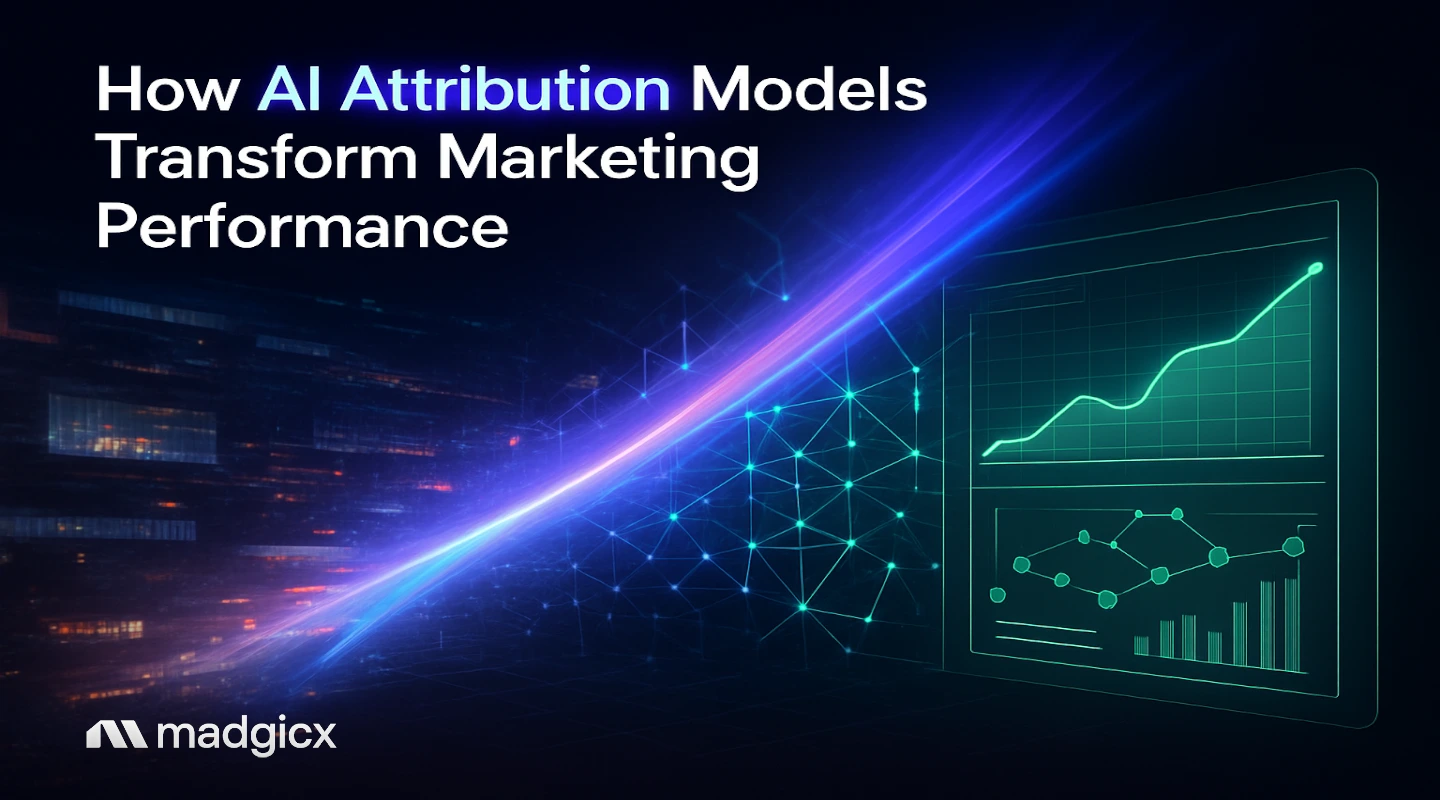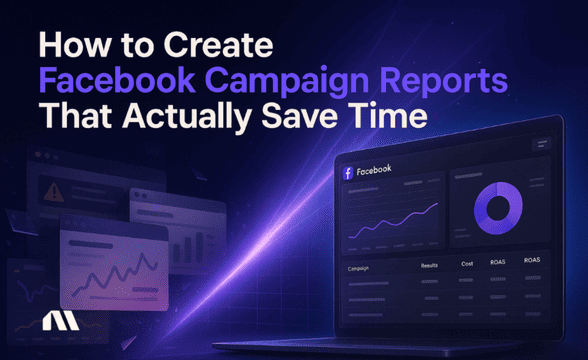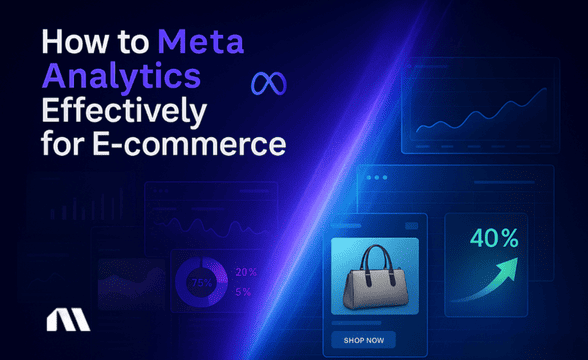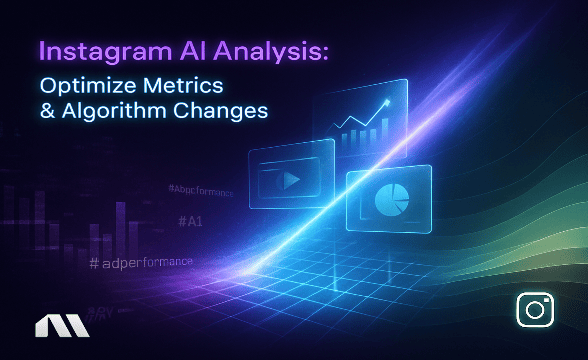Master AI attribution models to boost marketing ROI. Complete guide with privacy-compliant strategies, platform integration, and optimization techniques.
You're staring at your attribution dashboard at 2 AM, watching $50K in monthly ad spend get credited to "direct traffic" while your actual Facebook campaigns show zero conversions. Meanwhile, your Google Analytics is telling a completely different story than your Facebook Ads Manager, and you're left wondering which numbers to trust when presenting ROI to your CEO tomorrow morning.
Sound familiar?
Here's the reality: Attributive models AI use machine learning algorithms to analyze customer touchpoints across channels, intelligently assigning conversion credit based on actual influence rather than arbitrary rules. Unlike traditional last-click or first-touch models, attributive models AI process thousands of data points in real-time to identify which interactions truly drive conversions.
This gives you way more accurate performance insights than traditional attribution methods can deliver.
This guide reveals exactly how to implement attributive models AI that'll actually improve your ROI. You'll get step-by-step setup instructions, platform integration strategies, and privacy-compliant approaches that work in 2025's cookieless landscape – because let's be honest, we're all figuring this out together.
What You'll Learn
- How to implement attributive models AI that actually help optimize ROI over 90 days
- Privacy-compliant attribution strategies that work without third-party cookies
- Platform integration techniques for Facebook, Google, and cross-channel tracking
- Bonus: Attribution model selection framework for different business types and budgets
What Are Attributive Models AI? (The Technical Foundation)
Let's cut through the marketing fluff and get technical for a moment. Attributive models AI are machine learning systems that analyze customer journey data to determine which marketing touchpoints actually influence conversions.
Instead of following predetermined rules like "give all credit to the last click," these models learn from your actual customer behavior patterns. Pretty smart, right?
Here's how they differ from traditional attribution:
Traditional Rule-Based Attribution:
- Follows fixed rules (first-touch, last-touch, linear)
- Treats all customers the same way
- Can't adapt to changing behavior patterns
- Ignores interaction effects between channels
AI-Powered Attribution:
- Learns from your specific customer data
- Adapts to individual customer journey patterns
- Identifies interaction effects between touchpoints
- Updates models based on new conversion data
The three main types you'll encounter are:
- Algorithmic Attribution: Uses predefined ML algorithms (like Google's data-driven attribution)
- Custom Machine Learning Models: Built specifically for your business using your data
- Predictive Attribution: Forecasts future conversion probability based on current touchpoints
Pro Tip: Start with algorithmic attribution before building custom models. You need at least 1,000 conversions per month for custom ML models to be statistically reliable – trust me on this one.
Why Traditional Attribution Fails Performance Marketers
We need to talk about the elephant in the room: many marketers struggle with multi-touch attribution, and it's costing them serious money.
Here's why traditional attribution is broken for us performance marketers in 2025:
The iOS 14.5 Attribution Nightmare
When Apple dropped iOS 14.5, it didn't just limit Facebook's tracking – it fundamentally changed how we measure cross-device customer journeys. Suddenly, that customer who clicked your Facebook ad on mobile but converted on desktop became invisible to traditional attribution models.
We've all been there, watching our "performance" tank while knowing deep down that our ads are still working.
Budget Misallocation at Scale
Without accurate attribution, you're essentially flying blind with budget allocation. Performance marketers often waste 30-40% of their ad spend on channels that get credit for conversions they didn't actually drive.
When you're spending $100K+ monthly, that's $30K-40K in wasted budget. Ouch.
The Scaling Bottleneck
Here's the real challenge: traditional attribution creates artificial scaling limits. You think a campaign is "maxed out" because last-click attribution shows declining performance, but in reality, it's driving valuable upper-funnel interactions that other channels are getting credit for.
Cross-Platform Data Silos
Your Facebook Ads Manager shows one conversion count, Google Analytics shows another, and your CRM shows a third number. Without unified attribution, you're making optimization decisions based on incomplete data – and we all know how that ends.
The solution? Attributive models AI that can process these complex, cross-platform customer journeys and give you the accurate performance insights you need to scale profitably.
How Attributive Models AI Actually Work
Now for the technical deep-dive that most guides skip. Understanding how attributive models AI actually work under the hood will help you implement them correctly and avoid the common pitfalls we've all stumbled into.
Machine Learning Algorithm Types
Most AI attribution platforms use supervised learning algorithms trained on your historical conversion data. The model learns patterns like:
- Which touchpoint sequences lead to conversions
- How time delays between touchpoints affect conversion probability
- Which channel combinations work synergistically
- How customer segments respond differently to attribution paths
It's like having a really smart analyst who never sleeps, constantly learning from your data.
Data Requirements and Quality Thresholds
Here's what your attributive models AI need to function effectively:
- Minimum 1,000 conversions per month for reliable pattern recognition
- At least 30 days of historical data for initial model training
- Consistent tracking implementation across all touchpoints
- First-party data integration for cross-device matching
Real-Time vs Batch Processing
Most enterprise AI attribution systems use hybrid processing:
- Real-time: For immediate optimization decisions (bid adjustments, budget allocation)
- Batch processing: For complex model retraining and historical analysis
Integration with Existing Tech Stacks
Your attributive models AI need to play nice with:
- Ad platforms (Facebook, Google, TikTok) via APIs
- Analytics platforms (GA4, Adobe Analytics) for web behavior data
- CRM systems for offline conversion tracking
- Customer data platforms for identity resolution
For Facebook and Instagram campaigns specifically, platforms like Madgicx integrate directly with Meta's Conversions API to provide AI-powered attribution that works within Facebook's ecosystem while maintaining data accuracy.
Pro Tip: Start with platform-native AI attribution (like Google's data-driven attribution or Facebook's attribution tools) before investing in custom solutions. You can always upgrade later as your data volume and attribution needs grow.
Step-by-Step Implementation Guide
Alright, let's get into the practical stuff. I'm breaking this down into three phases that you can execute over 90 days, with specific timelines and deliverables for each phase.
Phase 1: Data Infrastructure Setup (Week 1-2)
Week 1: Audit Your Current Tracking
Before implementing attributive models AI, you need to know what data you're currently collecting and where the gaps are. It's like doing inventory before a big reorganization.
1. Inventory all tracking implementations:
- Facebook Pixel and Conversions API setup
- Google Analytics 4 configuration
- Platform-specific tracking (TikTok, LinkedIn, etc.)
- CRM and email platform integrations
2. Identify data quality issues:
- Duplicate conversion tracking (we've all been there)
- Missing cross-device identification
- Inconsistent event naming across platforms
3. Document your current attribution model:
- Which platforms use which attribution windows
- How you currently measure cross-channel performance
- Where you're seeing data discrepancies
Week 2: Implement First-Party Data Collection
This is where most implementations hit roadblocks. You need robust first-party data collection before attributive models AI can work effectively.
1. Set up server-side tracking:
- Implement Facebook Conversions API for improved tracking accuracy
- Configure Google Analytics 4 server-side tracking
- Set up customer data platform (CDP) if budget allows
2. Create unified customer identification:
- Implement email capture at key touchpoints
- Set up cross-device matching using hashed emails
- Configure customer ID passing between platforms
3. Establish data governance:
- Document data collection practices for privacy compliance
- Set up consent management for GDPR/CCPA
- Create data retention and deletion policies
Phase 2: Model Selection and Configuration (Week 3-4)
Week 3: Choose Your Attribution Approach
Your attribution model choice depends on your business type, data volume, and technical resources:
- E-commerce (High Volume): Start with Google's data-driven attribution + Facebook's attribution tools
- B2B/Lead Gen: Focus on multi-touch attribution with longer lookback windows
- App-Based: Prioritize mobile attribution platforms with deep-linking support
Agency/Multi-Client: Invest in unified attribution platform like Madgicx for cross-client insights
Week 4: Configure and Test Your Models
1. Set up platform-native attribution:
- Enable Google Analytics 4 data-driven attribution
- Configure Facebook attribution settings in Ads Manager
- Set appropriate attribution windows (7-day click, 1-day view for most e-commerce)
2. Establish performance baselines:
- Document current conversion rates by channel
- Record current customer acquisition costs
- Set up incrementality testing framework
3. Create testing framework:
- Set aside 10-20% of budget for attribution testing
- Design holdout groups for incrementality validation
- Plan A/B tests for different attribution models
Phase 3: Optimization and Scaling (Month 2-3)
Month 2: Monitor and Validate Performance
1. Track attribution accuracy:
- Compare AI attribution results to incrementality tests
- Monitor data quality scores and model confidence levels
- Validate cross-platform data consistency
2. Optimize based on insights:
- Reallocate budget based on attribution insights
- Adjust bidding strategies using AI attribution data
- Optimize creative and targeting based on attribution patterns
Month 3: Scale and Expand
1. Expand to additional channels:
- Add new platforms to your attribution model
- Integrate offline conversion data
- Include email and organic social touchpoints
2. Advanced optimization:
- Implement predictive attribution for budget forecasting
- Set up automated budget allocation based on attribution insights
- Create custom attribution reports for stakeholder communication
Platform-Specific Integration Strategies
Let's get into the nitty-gritty of platform integration. Each major advertising platform has its own attribution quirks and optimization opportunities – and we're going to tackle them all.
Facebook/Meta Attribution: The Foundation
Facebook's attribution tools have evolved significantly post-iOS 14.5. Here's how to maximize accuracy:
Conversions API Implementation
- Set up server-side event tracking for improved tracking accuracy
- Configure event matching for cross-device identification
- Use Meta ads custom metrics to track performance beyond standard attribution windows
Attribution Settings Optimization
- Use 7-day click, 1-day view for most e-commerce businesses
- Enable cross-device attribution in Ads Manager
- Set up offline conversion tracking for phone and in-store sales
Advanced Facebook Attribution with Madgicx
For performance marketers managing significant Facebook spend, Madgicx provides AI-powered attribution that goes beyond Facebook's native tools:
- Automated daily account audits that catch attribution discrepancies
- AI recommendations for budget allocation based on attribution insights
- Cross-campaign attribution insights that Facebook Ads Manager doesn't provide
Google Attribution: Beyond Last-Click
Google's data-driven attribution is powerful, but you need to configure it correctly:
GA4 Data-Driven Attribution Setup
- Enable data-driven attribution in GA4 (requires 3,000+ conversions in 30 days)
- Configure conversion paths reporting for multi-touch insights
- Set up custom attribution models for specific business goals
Google Ads Attribution Integration
- Import GA4 conversions into Google Ads for bidding optimization
- Use attribution reports to identify assist channels
- Configure cross-account conversion tracking for complex funnels
Cross-Platform Attribution Solutions
For comprehensive cross-platform attribution, you need solutions that can unify data from multiple sources:
Unified Attribution Dashboards
- Implement customer data platforms (CDPs) for identity resolution
- Use cross-platform optimization strategies to maximize attribution accuracy
- Create custom attribution models that account for platform-specific behaviors
API Integration Strategy
- Connect all ad platforms via APIs for real-time data sync
- Implement webhook-based attribution for immediate optimization
- Use AI marketing insights to identify cross-platform attribution patterns
Privacy-Compliant Attribution for 2025
Privacy compliance isn't just about avoiding fines – it's about building sustainable attribution systems that work in a cookieless future. Here's how to implement privacy-first attributive models AI without losing your mind:
Post-Cookie Attribution Strategies
First-Party Data Maximization
The foundation of privacy-compliant attribution is robust first-party data collection:
- Email-Based Identity Resolution: Use hashed email addresses to connect customer touchpoints across devices and platforms
- Progressive Profiling: Gradually collect customer data through value exchanges (content downloads, account creation, etc.)
- Behavioral Fingerprinting: Use privacy-compliant behavioral signals to identify returning visitors
Server-Side Tracking Implementation
Server-side tracking can increase attribution accuracy by 30% while maintaining privacy compliance:
- Implement Facebook Conversions API for improved tracking accuracy
- Set up Google Analytics 4 server-side tracking via Google Tag Manager Server
- Use customer data platforms for unified server-side event processing
Consent Management Integration
GDPR/CCPA Compliance Framework
- Implement granular consent management for different data processing purposes
- Create clear data collection notices that explain attribution benefits
- Set up automated data deletion workflows for consent withdrawals
Consent-Based Attribution Models
- Develop attribution models that work with partial data from non-consenting users
- Use statistical modeling to estimate attribution for consent gaps
- Implement privacy-preserving techniques like differential privacy for aggregate reporting
iOS/Android Privacy Compliance
iOS 14.5+ Attribution Strategies
- Maximize App Tracking Transparency (ATT) opt-in rates through value proposition messaging
- Implement SKAdNetwork for iOS attribution where ATT consent isn't available
- Use probabilistic attribution models for cross-device matching without device IDs
Android Privacy Sandbox Preparation
- Prepare for Topics API implementation replacing third-party cookies
- Test FLEDGE remarketing approaches for cookieless retargeting
- Implement Trust Tokens for fraud prevention without invasive tracking
Pro Tip: Server-side tracking through platforms like Madgicx's Cloud Tracking solution can improve attribution accuracy by 30% while maintaining full privacy compliance. The key is processing data on your own servers before sending aggregated insights to advertising platforms. Try Madgicx for free.
Measuring and Optimizing AI Attribution Performance
Now comes the crucial part: how do you know if your attributive models AI are actually working? Here's how to measure and optimize attribution performance like a pro.
KPI Frameworks and Success Metrics
Primary Attribution Accuracy Metrics
- Model Confidence Score: Most AI attribution platforms provide confidence scores (aim for 80%+ confidence)
- Cross-Platform Data Consistency: Variance between platforms should decrease by 20-30% with proper AI attribution
- Incrementality Test Alignment: AI attribution results should align within 10-15% of incrementality test results
Business Impact Metrics
Track these KPIs to measure real business impact from improved attribution:
- Customer Acquisition Cost (CAC) Accuracy: More accurate attribution typically improves reported CAC by 15-25%
- Return on Ad Spend (ROAS) Consistency: ROAS variance across platforms should decrease significantly
- Budget Allocation Efficiency: Track how attribution insights improve budget distribution across channels
ROI Measurement and Validation Techniques
Incrementality Testing Integration
The gold standard for validating AI attribution accuracy:
- Geo-Based Holdout Tests: Compare attributed conversions to actual lift in test vs control markets
- Time-Based Holdout Tests: Pause campaigns and measure true incremental impact
- Audience Holdout Tests: Exclude segments from campaigns and measure attribution accuracy
Attribution Model Validation Framework
Use this three-step validation process:
- Historical Backtesting: Apply new attribution model to historical data and compare to known outcomes
- Cross-Validation: Split data into training and testing sets to validate model accuracy
- Real-Time Validation: Continuously compare attribution predictions to actual conversion outcomes
Common Optimization Mistakes to Avoid
Mistake #1: Over-Optimizing Based on Attribution Data
Just because attributive models AI show a channel is performing well doesn't mean you should immediately shift all budget there. We've all made this mistake. Use attribution insights to guide gradual optimization, not dramatic budget swings.
Mistake #2: Ignoring Statistical Significance
Many performance marketers make optimization decisions based on attribution data that isn't statistically significant. Wait for sufficient data volume before making major changes – patience pays off here.
Mistake #3: Not Accounting for Attribution Lag
Attributive models AI need time to learn and improve. Don't judge performance in the first 2-4 weeks of implementation. Give it time to work.
Mistake #4: Focusing Only on Last-Touch Optimization
Even with AI attribution, many marketers still optimize primarily for last-touch performance. Use multi-touch attribution AI insights to optimize entire customer journeys, not just final conversions.
For Facebook and Instagram campaigns specifically, platforms like Madgicx provide built-in attribution optimization that automatically adjusts campaign performance based on AI attribution insights, removing the guesswork from manual optimization.
Advanced AI Attribution Strategies
Ready to take your attribution game to the next level? These advanced strategies separate the pros from the amateurs.
Predictive Attribution Modeling
Conversion Probability Scoring
Instead of just tracking completed conversions, predictive attribution assigns probability scores to in-progress customer journeys:
- Score prospects based on their current touchpoint sequence
- Optimize campaigns for high-probability prospects before they convert
- Allocate budget based on predicted lifetime value, not just immediate conversions
Budget Forecasting with AI Attribution
Use historical attribution data to predict future performance:
- Forecast seasonal attribution pattern changes
- Predict optimal budget allocation for upcoming campaigns
- Model attribution impact of new channel additions
Custom Attribution Model Development
When to Build Custom Models
Consider custom attribution models when:
- You have 10,000+ monthly conversions across multiple channels
- Your business model doesn't fit standard attribution approaches (subscription, B2B, etc.)
- You need attribution for offline conversions or complex sales cycles
Implementation Framework
- Data Collection: Gather 6-12 months of comprehensive customer journey data
- Feature Engineering: Create variables for touchpoint timing, sequence, and interaction effects
- Model Training: Use machine learning algorithms (random forest, neural networks) to identify attribution patterns
- Validation: Test model accuracy against incrementality experiments
- Deployment: Integrate model outputs with campaign optimization workflows
Attribution-Driven Creative Optimization
Creative Attribution Analysis
Most marketers focus on channel attribution, but creative attribution is equally important:
- Track which creative elements drive different stages of the customer journey
- Use ad performance analytics to identify creative attribution patterns
- Optimize creative rotation based on attribution insights, not just click-through rates
Dynamic Creative Attribution
Advanced platforms can now attribute conversions to specific creative elements:
- Headlines, images, and call-to-action buttons get individual attribution scores
- Automatically optimize creative combinations based on attribution performance
- Scale winning creative elements across campaigns and platforms
FAQ Section
How much data do you need for attributive models AI to be effective?
Most attributive models AI require a minimum of 1,000 conversions over 30 days for reliable results. However, you can start with rule-based models and upgrade as your data volume grows. For custom machine learning models, you'll need 10,000+ monthly conversions for statistical reliability.
Can attributive models AI work for B2B companies with long sales cycles?
Absolutely. Attributive models AI excel at long sales cycles by tracking micro-conversions and engagement patterns throughout the entire customer journey. The key is setting up proper lead scoring and multi-touch tracking from first contact to closed deal. B2B companies often see significant improvement from AI attribution because traditional models completely miss the complex, multi-stakeholder decision process.
What's the difference between attributive models AI and Google's data-driven attribution?
Google's data-driven attribution is one type of attributive models AI, but it's limited to Google's ecosystem and requires 3,000+ conversions in 30 days. Comprehensive AI attribution platforms analyze cross-channel data from Facebook, Google, email, organic social, and offline touchpoints to provide insights that single-platform solutions can't match.
How do I prove attributive models AI ROI to executives?
Use incrementality testing to validate attribution accuracy, then demonstrate improved budget allocation results. Most companies see 15-25% improvement in customer acquisition costs within 90 days. Create before/after reports showing how attribution insights led to specific optimization decisions and measurable performance improvements.
Are attributive models AI GDPR and privacy compliant?
When implemented correctly with first-party data and proper consent management, attributive models AI can be fully privacy compliant. The key is avoiding third-party cookies and using server-side tracking with explicit user consent. Many AI attribution platforms now offer privacy-preserving techniques like differential privacy and federated learning.
How do attributive models AI handle iOS 14.5 tracking limitations?
Attributive models AI use multiple data sources to overcome iOS limitations: server-side tracking via Conversions API, first-party data matching, and statistical modeling to fill attribution gaps. While accuracy isn't 100%, it's significantly better than relying solely on pixel-based tracking.
Should I use platform-native attribution or third-party solutions?
Start with platform-native solutions (Google's data-driven attribution, Facebook's attribution tools) if you're primarily focused on single-platform optimization. Upgrade to third-party solutions like Madgicx when you need cross-platform attribution, advanced AI features, or attribution for channels that don't offer native AI attribution.
How long does it take to see results from attributive models AI implementation?
Initial setup takes 2-4 weeks, but you'll start seeing attribution insights immediately. Meaningful optimization results typically appear within 30-60 days as the AI models learn your customer patterns. Full ROI impact usually materializes within 90 days of implementation.
Transform Your Attribution Strategy Today
The attribution landscape has fundamentally changed. While many marketers still struggle with multi-touch attribution, the performance marketers who've implemented attributive models AI are seeing significant ROI improvements and scaling their campaigns with confidence that their data actually reflects reality.
Key Takeaways:
- Attributive models AI help improve ROI through more accurate conversion tracking across all touchpoints
- Implementation requires proper data infrastructure and minimum 1,000 monthly conversions for reliable insights
- Privacy-compliant strategies using first-party data and server-side tracking are essential for sustainable attribution in 2025
- Platform integration, especially for Facebook and Instagram campaigns, maximizes attribution accuracy and optimization potential
Your Next Step: Start with your highest-volume traffic source and implement attributive models AI there first. For Facebook and Instagram campaigns, Madgicx's AI attribution provides an efficient path to improved performance insights and optimization, combining Meta ads revenue attribution with automated optimization recommendations that actually work.
The marketers who master attributive models AI in 2025 will have a significant advantage over those still relying on last-click models and guesswork. The question isn't whether you should implement AI attribution – it's whether you can afford not to.
Stop guessing which campaigns drive real results. Madgicx's AI attribution automatically tracks and optimizes your Facebook and Instagram campaigns with machine learning precision, giving you the data clarity us performance marketers desperately need to scale profitably.
Digital copywriter with a passion for sculpting words that resonate in a digital age.







.avif)







